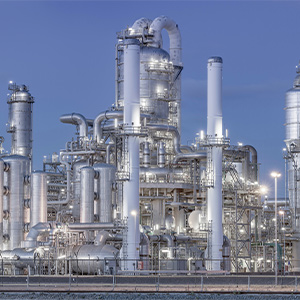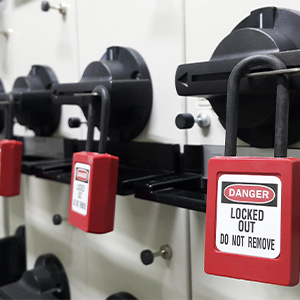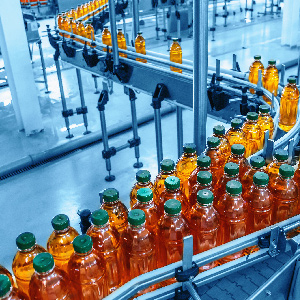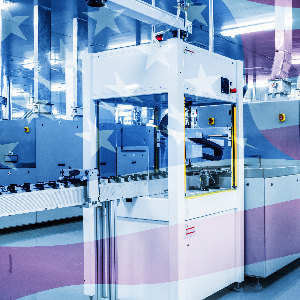A Beginner's Guide To Machine Safety
Machine safety is a complex and evolving subject, with constant changes required to keep up with the demands of new technology. These changes extend to the safety regulations incorporated in the various British, European and International laws applied to machinery, and to the directives of the UK Health and Safety Executive (HSE). At Rowse, we take safety very seriously, so this Beginner's Guide to Machine Safety is designed to explain the main points as simply as possible.
This means it won't cover every minute detail relating to machine safety; it's intended only to introduce the general principles. For any doubts you may have regarding your own particular systems, we are always happy to offer you our expert advice. Our team at Rowse has many members who are trained specialists in machine safety. They have been certified by TÜV Nord with the CMSE® qualification (Certified Machinery Safety Expert) and are able to carry out PUWER and risk assessments at your site.
Rules and Regulations
The UK government is stringent in its approach to machine safety, and because of its position vis-a-vis the European Union, is affected by a range of laws, directives and general guidance. Most of these adhere to the same principles and often incorporate specific standards relating to machinery. The original British Standards (BS) have merged into those of the European Commission, often called Euronorms (EN), and those laid down by the International Standards Organisation (ISO).
The current UK regulations regarding machine safety come under the general umbrella of the Health and Safety at Work Act of 1974 (HSW) and fall into two main categories:
- Those relating to the machines themselves, the Supply of Machinery (Safety) Regulations (SMR)
- Those relating to the people who come into contact with the machines (Provision and Use of Work Equipment Regulations, or PUWER)
Health and Safety at Work
Many aspects of PUWER are related to the HSE directives that govern people at work and working conditions, as set out in the HSW. This act is a wide-ranging piece of legislation which covers not only the equipment used by people at work, but their surroundings and their behavioural practices while at the working premises. Where it touches on machinery, the intention of the Act is not to eliminate all possible risks in the workplace, but to reduce them as far as possible by following ACOP procedures and applying them diligently.
It should be noted that there are additional statutory provisions under HSW that are applicable to specific work environments, such as the Lifting Operations and Lifting Equipment Regulations (LOLER), the Control of Substances Hazardous to Health (COSHH), the Dangerous Substances and Explosive Atmospheres Regulations (DSEAR), and more.
Supply of Machinery (Safety) Regulations (SMR)
The SMRs apply specifically to new machines which are available for sale in the EU for the first time, so relate particularly to manufacturers and suppliers. They were first issued in 2008, and require all machines for first-time sale in the EU to bear a CE mark, as per the European Machinery Directive 2006/42/EC (EMD). This directive comprises various aspects of machine manufacture, including safety components, and is the main legislation governing the sale and supply of machinery in the UK and Europe.
Under the SMR, all CE-marked machines must have been assessed as conforming to European standards, and be issued also with an applicable Declaration of Conformity and a technical file. In addition, instructions for use must be provided in the end user's own language. Machinery must also satisfy, to the state of the art, the EMD's Essential Health and Safety Requirements (EHSR).
PUWER
PUWER was put in place by the HSE in 1998, to govern the safety of those companies and their employees who own, control, access or operate machinery for work purposes. It has jurisdiction over all UK places of work where machinery is in use, both on land and offshore, in installations such as oil rigs and wind turbines. An Approved Code of Practice (ACOP) is issued and regularly updated by the HSE, setting out the necessary duties and conditions. While they do not directly reference specific standards, complying with the PUWER and ACOP directives is indicative of following best practice.
Under the provisions of PUWER, all machinery provided for operation in a place of work must be assessed on installation, and regularly thereafter, to ensure that it is safe to use. This means an inspection, carried out by authorised personnel, to certify that the right machine is assigned to the right job; that it is correctly installed, and in good working order. It must be regularly maintained to keep it in a safe condition, and only operated by trained personnel. All appropriate protective features must be provided to guarantee the health and safety of machine operators, including emergency stops, warning lights and isolation switches.
PUWER Inspections
An inspection can be visual only, to look for signs of deterioration, or given a more rigorous examination to ensure that machinery can safely be operated, adjusted where necessary and properly maintained. Any deterioration, such as damaged, worn or defective components, can be assessed and remedied before it causes any unacceptable risks. A PUWER inspection will also audit documentary records of other relevant checks such as functional assessments of protective devices. All checks, assessments and inspections carried out by the user on the equipment must therefore be recorded, and produced for inspection, as part of the PUWER requirements.
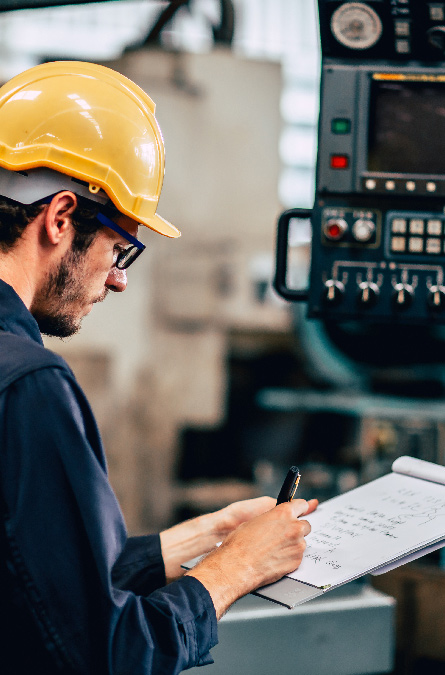
Who is responsible?
- SMR/EMD – manufacturers and suppliers
- HSW/PUWER – owners, employers and machine operators
Manufacturers
The duty of manufacturers under HSW section 6 (1) is to design and construct machines in compliance with all relevant laws, directives and EHSRs. This is to ensure that the machinery has no inherent risks, and provides the maximum possible level of safety to anyone coming into contact with them. This includes such built-in safety features as emergency stop controls, two-hand controls, and interlock switches. More complex modern systems can be designed with an overall safety controller which governs multiple safety devices in the system. Sensors and light curtains can control access to specific parts of the machine, in order to prevent operators from coming in contact with moving parts.
Appropriate inspections and tests must be carried out before the machinery can be certified, and suitable user information provided. It is also the manufacturers' duty to supply updates in respect of any new risks that manifest in the design after the machine is put on the market. Under HSW section 6 (2), designers of machinery must complete comprehensive research to identify all the potential risks that could arise, and to determine how they can be minimised or eliminated. A technical construction file (TCF) must be provided if requested by enforcement authorities, to prove the machine's conformity with the relevant laws and directives.
Suppliers
Suppliers of new machines must ensure that they have the correct documentation and accreditation, such as a TCF and CE marking, to show that they comply with all relevant legislation. In the case of reconditioned equipment, it may be possible to have machinery re-assessed in order to apply CE markings for future sale.
Owners and Employers
It is the duty of owners and employers to comply with all relevant laws and directives, and to follow industry best practice in the application of HSE guidelines and ACOP. Employers must provide and maintain equipment and work systems that are safe and offer no risks to users' health. They should also carry out regular risk assessments and inspections, to ensure that all safety measures are up-to-date and functioning properly. It is incumbent on machine owners to install safety perimeter guards, such as light fences or physical machine enclosures, and to follow HSW procedures to protect operators from accident or injury. This includes protecting against chronic injuries which might arise from bad posture, or a sequence of movements that induces repetitive strain injuries.
It is also their duty to furnish the workplace with hazard warning signs to draw attention to any area or point of contact where machines might cause physical damage, and to provide users with appropriate Personal Protective Equipment (PPE) where necessary. Further, all machine operators must be fully informed and trained as to the use of the equipment, and kept up-to-date on all relevant safety procedures.
Operators
It is the duty of workers and machinery operators not to approach or operate any machinery without being fully informed and trained in its use, and supervised if necessary. All workers must wear any appropriate PPE that is issued to them while operating the machinery, and take care to avoid dangling long hair, loose clothing or jewellery anywhere near a machine where it might become entangled.
Workers must abide by all safety warning signs or indicators and not cross perimeter guards without authorised access. They must not modify or bypass safety features on any piece of equipment, or use any equipment that is damaged or in poor working condition. Machine operators should immediately report any damage or malfunction in the machine or its safety guards to a supervisor, and should not use the machine again until it is safe to do so.
Best Practice
Where there is a Law, Act or Directive, this is legally binding and will typically outline the principles of safe production or procedure, but without a great deal of detail as to how these are implemented. Standards prescribe the manner of design and construction for safe use, and must be followed when it comes to the safety of the machine itself and its components. However, while standards may be incorporated into a Law, Act or Directive, they are not in themselves a legal instrument. Compliance with standards does, however, indicate due diligence and that you are following best practice. EN standards are primarily involved at the CE marking stage of machine manufacture, but can also come up during PUWER inspections. Where any conflict exists between EN standards and specific UK guidance, then the prevailing UK practice should be followed.
Neither the HSE or PUWER refer specifically to standards, and there is no legal obligation to comply with them. However, manufacturers, suppliers and owners usually abide by, and are advised by HSE guidelines, such as ACOP and published information sheets. This is normally sufficient to demonstrate to any HSE inspector that you are in compliance with PUWER/ACOP and have followed industry best practice in complying with the law.
Get More From Rowse Straight To Your Inbox

